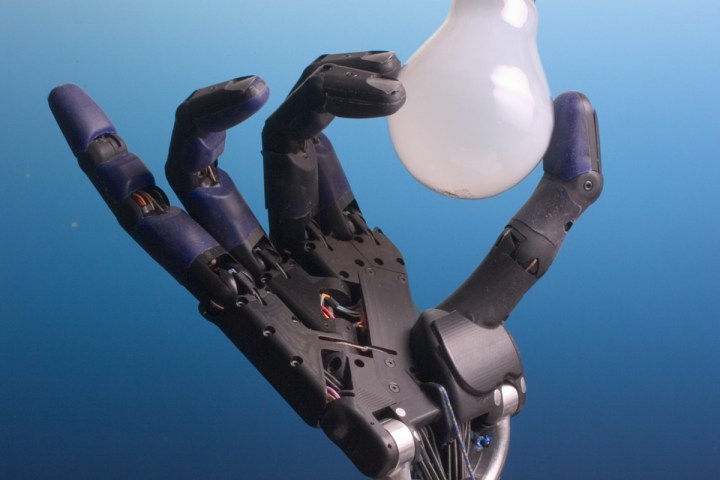
Engineers have long sought to create synthetic skin that can detect pressure as sensitively as the real thing to help robots get in touch with the world around them. The problem is this “smart skin” tends to demand impractical energy and expense — but robots may soon have an energy-efficient and cost-effective means to feel their surroundings, thanks to a group of researchers who’ve developed simpler, cheaper synthetic smart skin.
The self-powered skin was developed by a Chinese team led by Mayue Shi, who designed the wearable sensors to recognize contact location and the force of an interaction. These features aren’t new to smart skins. South Korean researchers have developed skin that can detect degrees of wetness, and for years DARPA-sponsored smart skins have been built to register pressure as sensitively as human fingerprints. But these past designs have also been expensive and power-hungry. More sensitivity has meant more wires, electrodes, and cost. Mayue Shi and his team claim their synthetic skin can accurately detect pressure and contact location with fewer touch-sensitive terminals and less energy.
Powered by the turboelectric effect –which is created from the friction of two materials in contact– the four silver nanowire electrodes can achieve a resolution of just 1.9 millimeters. Other designs require 36 electrodes to achieve similar sensitivity. Despite it’s relatively simple design, the researchers say their ultra-thin plastic smart skin can perceive even the slight touch of a bumblebee. Add to that the skin’s durability, which researchers say can maintain the same sensitivity after over 30,000 interactions.
Equipping machines with sensitive synthetic skin is a next logical step to helping them sense and engage with the real world — but smart skins may help humans too. With prosthetic limbs, people can engage with their surroundings but not feel their environment. Prosthetic limbs coated with simple and affordable smart skin may let more people attain a sense of touch, which so many of us take for granted.


